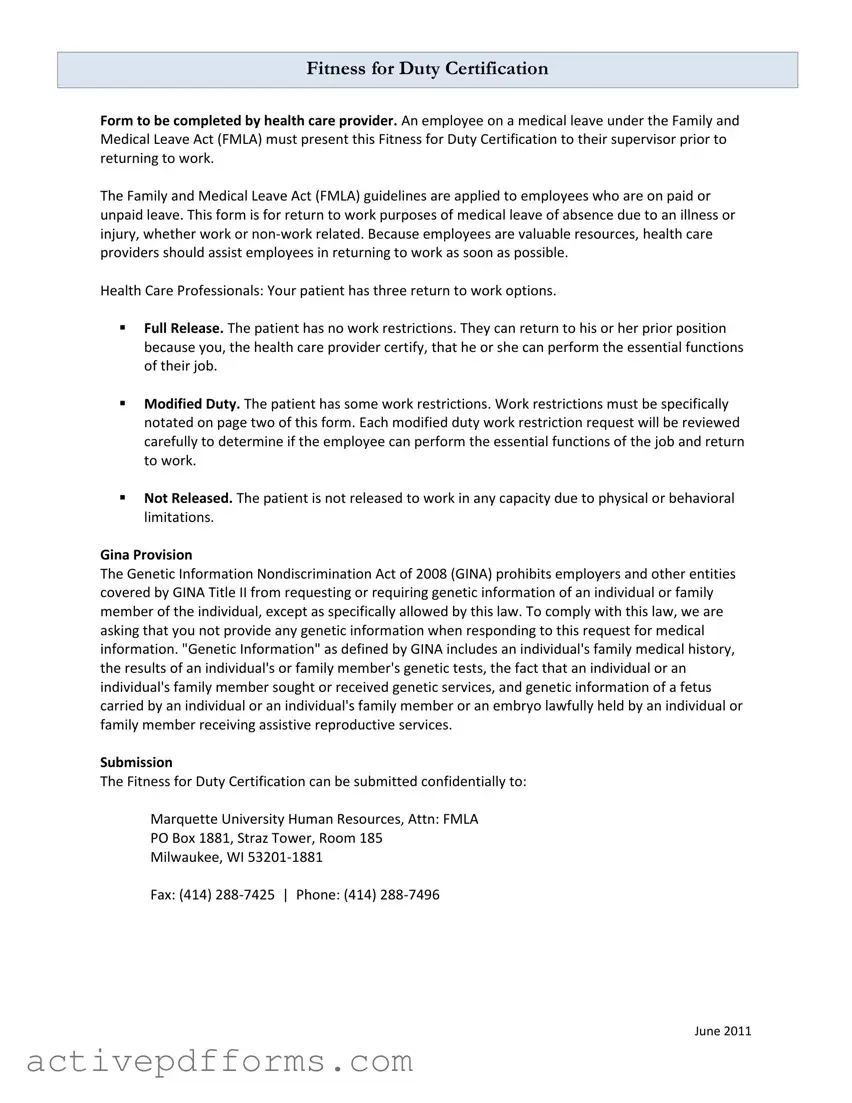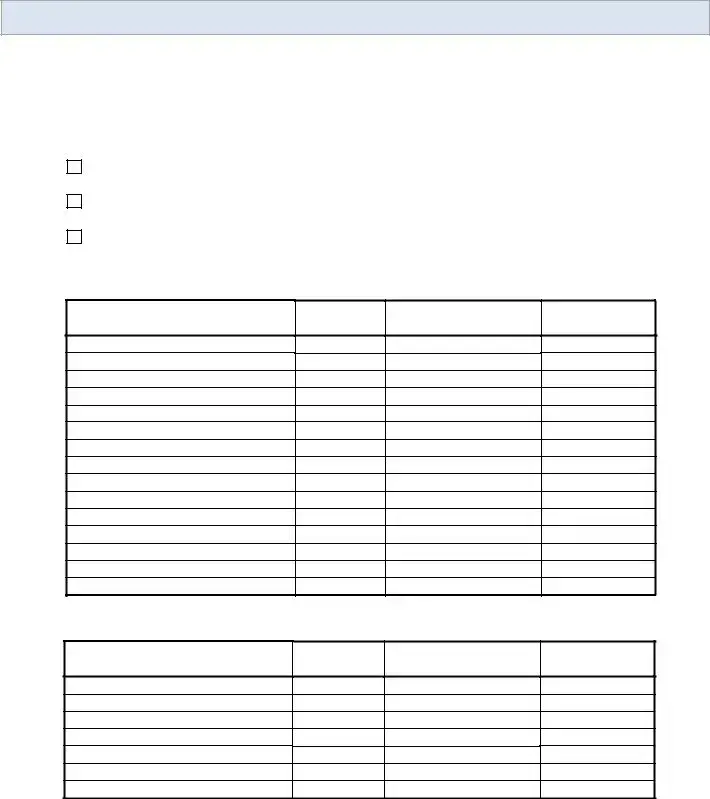1. |
Employee / Patient |
_____________________________________ |
2. |
Date of Medical Examination |
_____________________________________ |
3.Please check the status of the employee’s release for duty
Full, unrestricted duty effective __________________________
Modified duty effective ________________ and next evaluation date ________________
Not released for any type of duty. Next evaluation date will be ________________
4. Physical Evaluation
|
Full |
Partial Restrictions |
No Restrictions |
|
Restrictions |
(please specify) |
|
|
Sedentary-Lifting 0 to 10 pounds
Light-Lifting 10 to 20 pounds
Moderate-Lifting 20 to 50 pounds
Heavy-Lifting 50 to 100 pounds
Pulling/Pushing, Carrying
Reaching or working above shoulder
Walking
Standing
Stooping
Kneeling
Repeated Bending
Climbing
Operating a motor vehicle
Finger Manipulation (typing)
Pain (frequency, degree, signs)
5. Behavioral Evaluation
Able to |
Other Considerations |
Not Able to |
perform |
(please specify) |
perform |
Understanding
Remembering
Sustained concentration
Follow-through on instructions
Decision making
Receiving supervision
Relating to co-workers and students
6.Other Restrictions, Considerations, or Notes
_____________________________________________________________________________________
_____________________________________________________________________________________
I hereby certify that the facts in this document are true and correct.
________________________________ |
________________ |
____________________ |
Printed Name of Health Care Provider |
Date |
Phone Number |
|
|
June 2011 |


